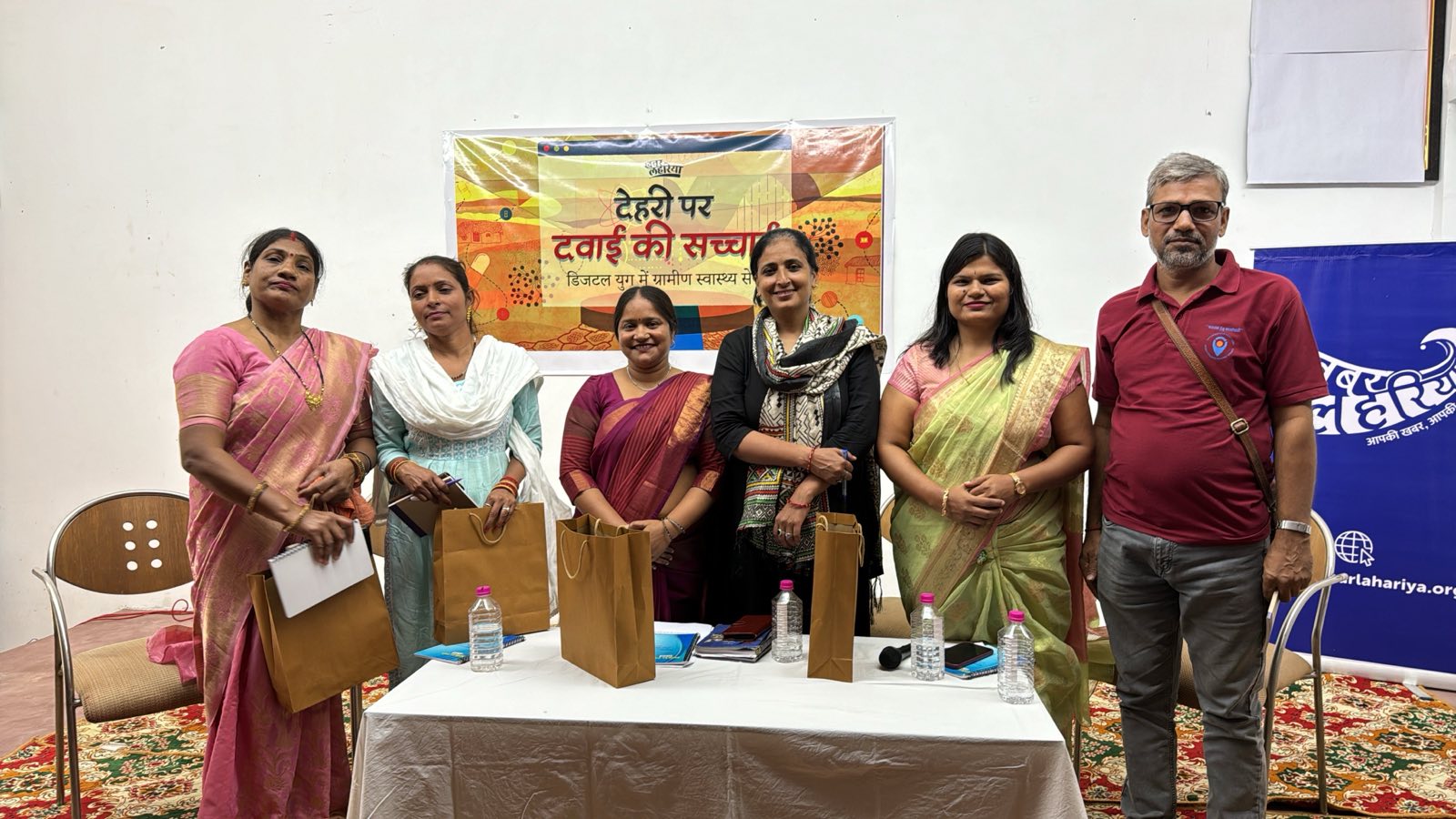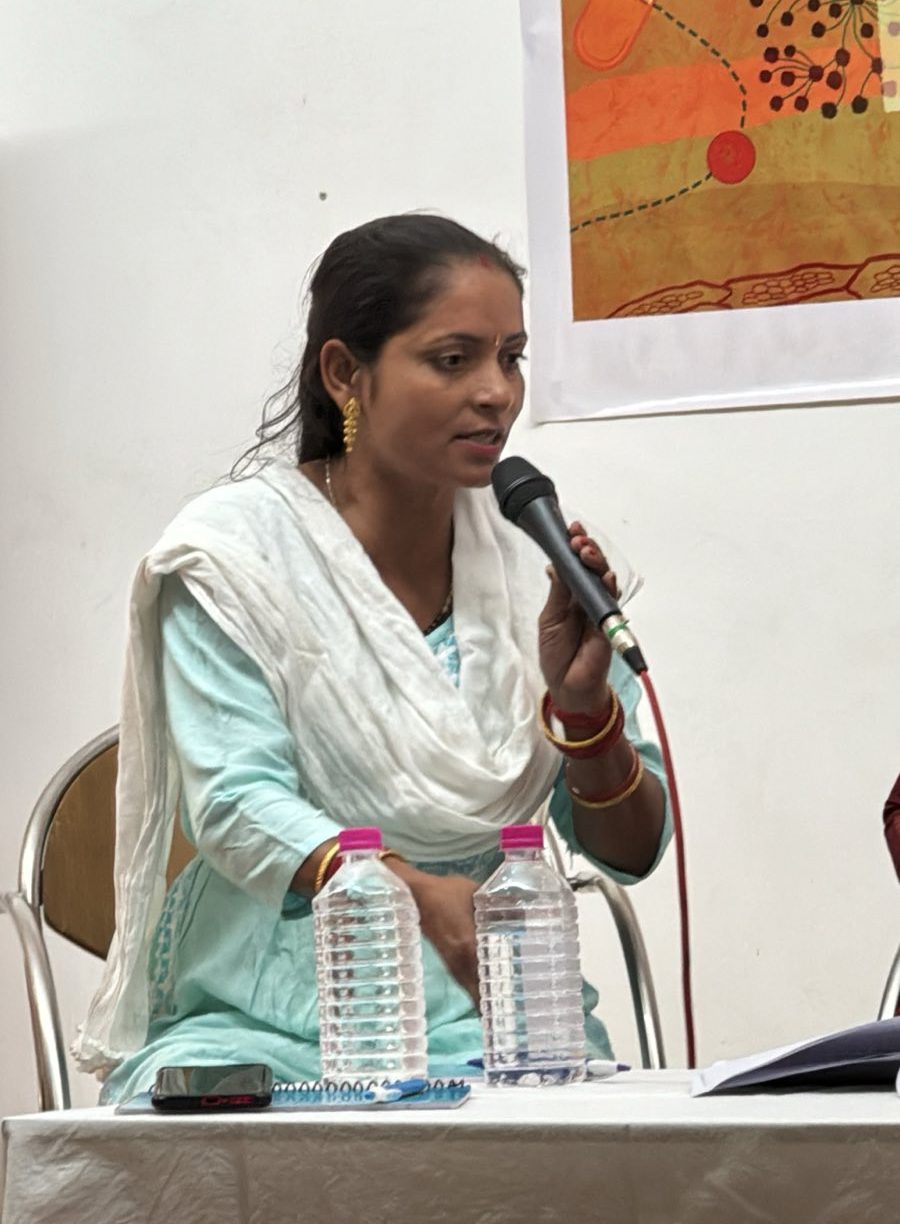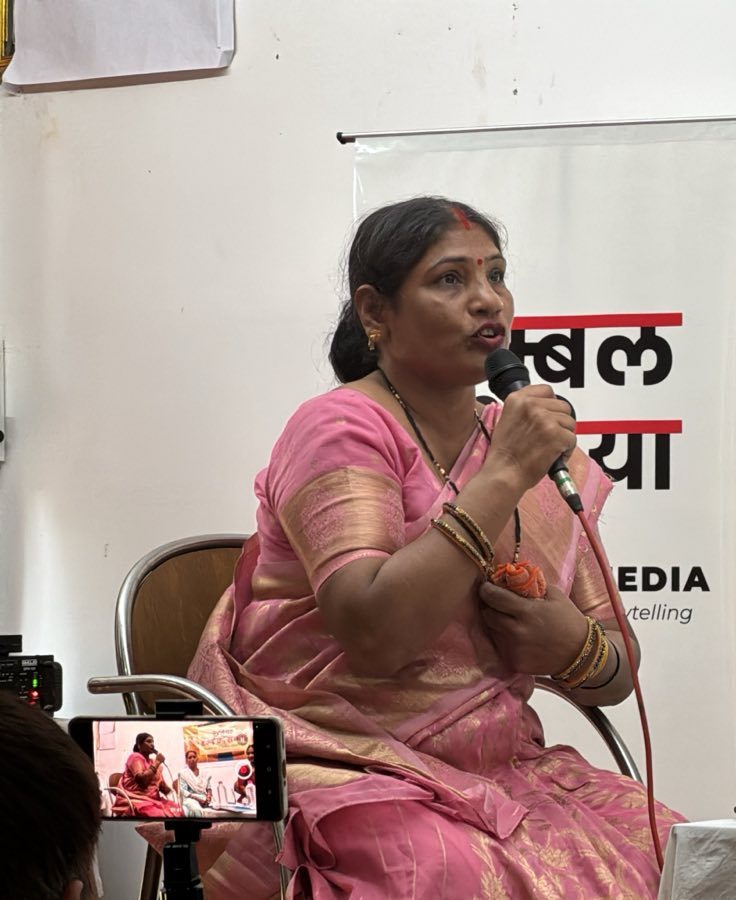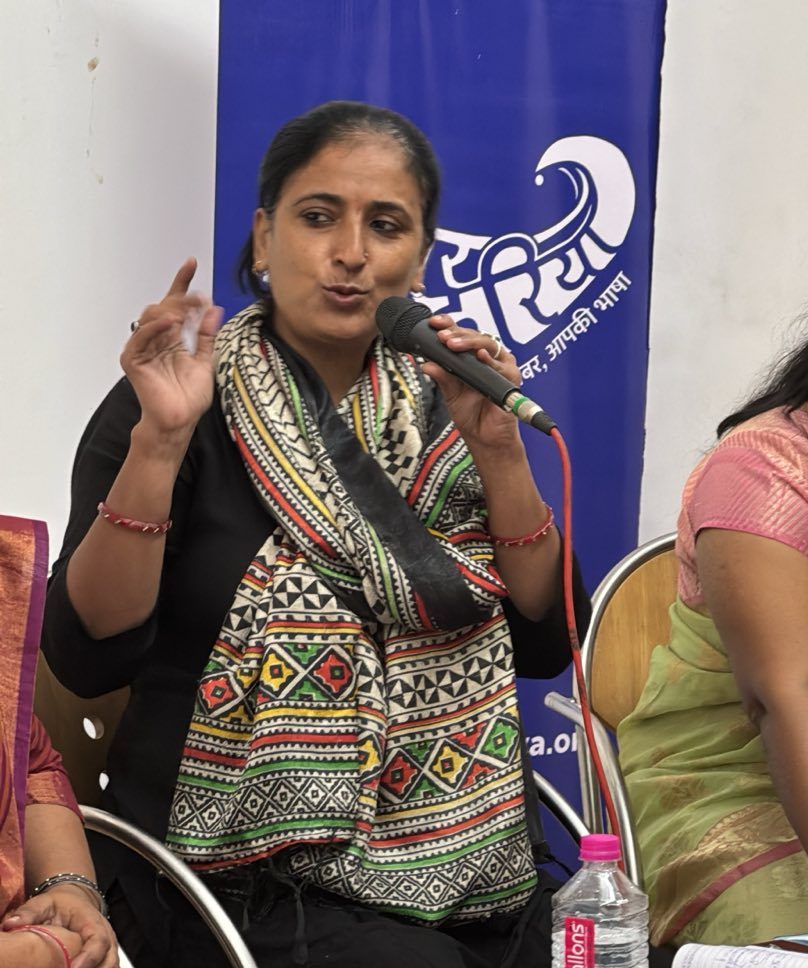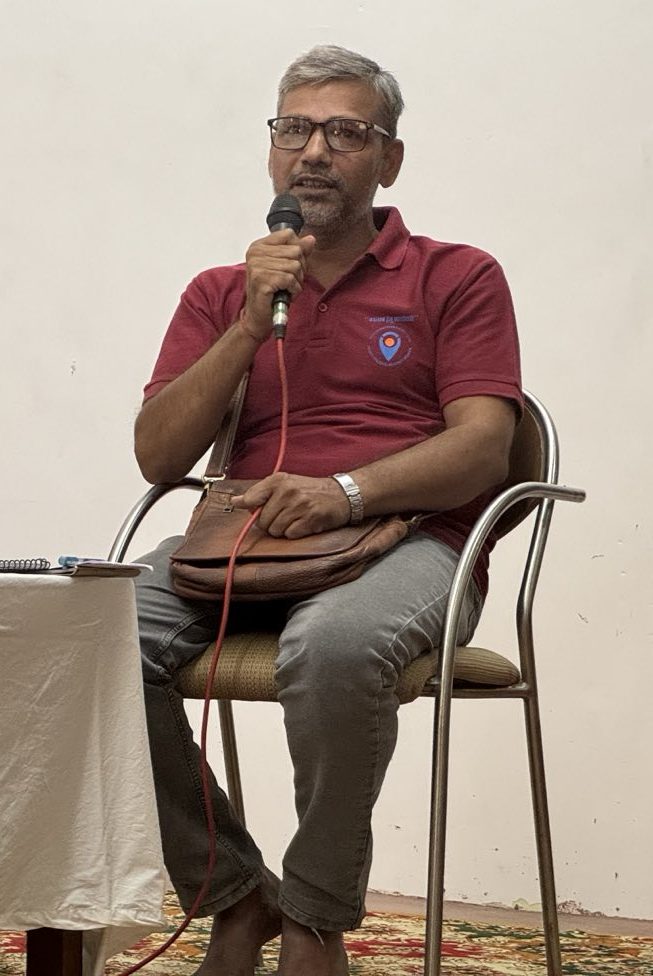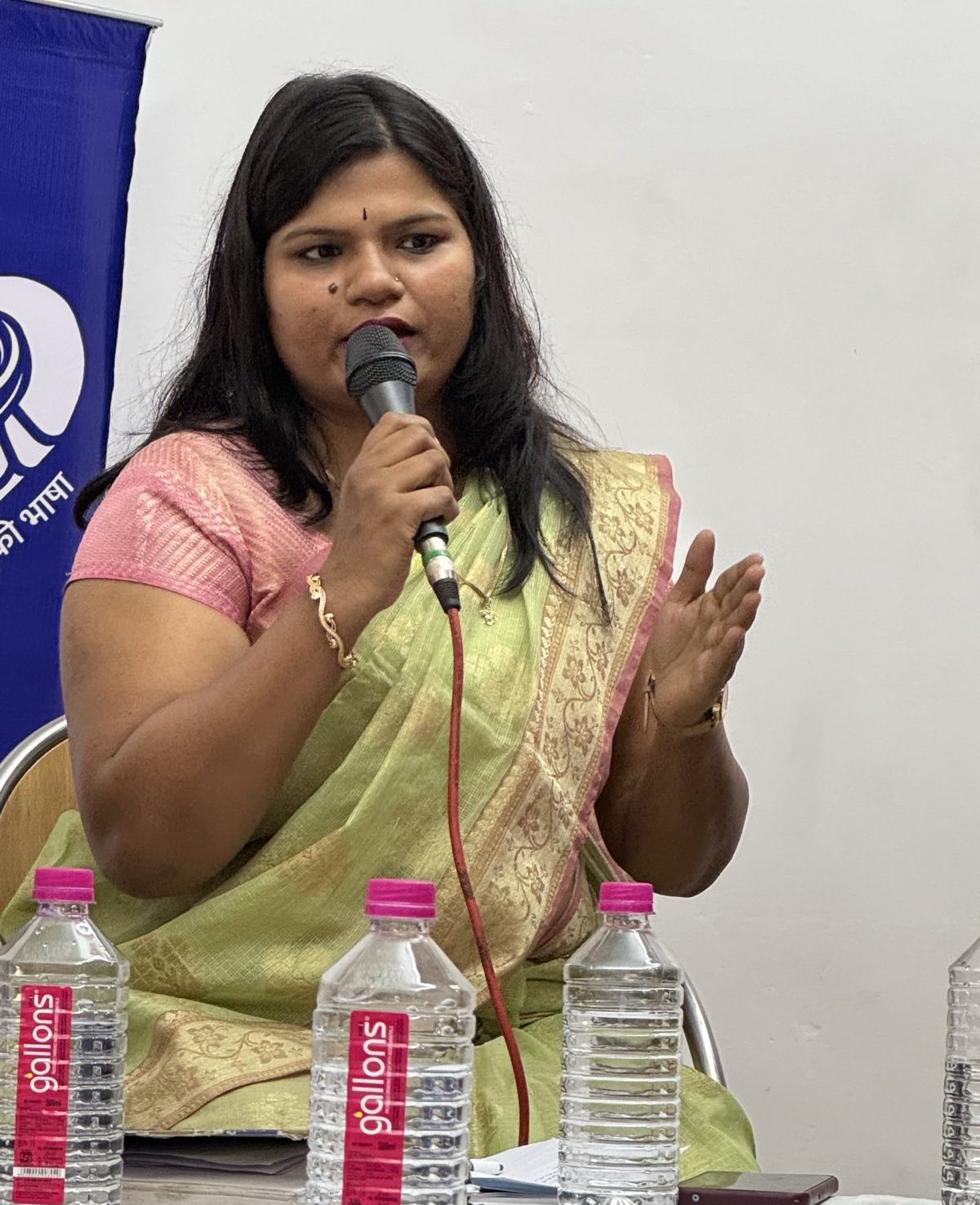Activists, ASHA, and Anganwadi workers shared their personal experiences, highlighting the pitfalls of digitization. Many emphasized that while digital tools have streamlined certain tasks, the lack of proper training, accessibility issues, and increased workload have led to added stress, making it clear that technology alone is not enough to overcome the complex challenges they face.
Written by Sejal
Khabar Lahariya recently organised a roundtable in Banda to discuss the impact of digitization in rural health services— highlighting both the opportunities and challenges that technology brings to the sector. The discussion explored how digital tools have transformed the delivery of healthcare but also the limitations they bring, especially when it comes to training, safety, and social norms.
The roundtable brought together key stakeholders from the healthcare sector, including ASHA workers, healthcare professionals, and social activists. Among the panelists were Aarti, an ASHA worker from Mahoba; Shabina Mumtaz, a Senior Reference Group Member from the Human Rights Unit in Banda; Dr. Archana Bharti, a PHC Doctor and Counselor from Banda; Mahendra Kumar, a social worker from Mitra Bundelkhand Sanstha in the Naraini region of Banda; and Mamta Kanojiya, an Anganwadi worker from Banda.
Journalists from prominent news platforms such as Prime News, The Quint, Newstrack, and Jantantra TV were also present, adding valuable media perspectives to the discussion. The conversation centered on the role of digital technology in rural healthcare, the barriers faced by frontline workers, and how accessibility, training, and cultural attitudes play a role in shaping these challenges.
Activists, ASHA, and Anganwadi workers shared their personal experiences, highlighting the pitfalls of digitization. Many emphasized that while digital tools have streamlined certain tasks, the lack of proper training, accessibility issues, and increased workload have led to added stress, making it clear that technology alone is not enough to overcome the complex challenges they face.
This digital revolution has seeped into the remotest corners of rural India, promising efficiency and modernization. Yet, in Banda, Uttar Pradesh, this roundtable discussion laid bare the contradictions of digitizing rural healthcare. ASHA workers, social activists, and medical professionals gathered to debate the promises and pitfalls of this technological tide.
The session began with a screening of Khabar Lahariya’s video report on ASHA workers and their interaction with technology, which set the tone for a pragmatic conversation. The video highlighted the immense challenges faced by these frontline workers—balancing digital demands with the harsh realities of rural healthcare. As per Dr. Archana Bharti, PHC Doctor in Banda “If we want to ensure medicines reach every doorstep, we need to empower ASHA workers, and digitization is essential in today’s age.”
Empowerment or Entrapment? The Double-Edged Sword of Digitization
The conversation was the paradox of digital empowerment. ASHA worker Aarti from Mahoba captured the tension succinctly:
“Though we were not initially trained digitally, we self-taught ourselves to work online. But while digital tools help us track and document, the additional workload without proper support is a burden.”
Shabina Mumtaz, a senior member of Banda’s Human Rights Unit, echoed this sentiment. She noted how inadequate training diminishes confidence:
“Empowerment takes a back seat when my digital skills are lacking; it affects my self-esteem.”
This recurring theme emphasized that while technology can streamline processes, it often marginalizes workers when deployed without adequate preparation and support.
The Human Cost of a Digital Divide
Digitization has also inadvertently widened the gap between aspiration and reality. Mamta Kanaujiya, an Anganwadi worker in Banda, reflected on the irony of the tools given to her:
“It’s not a mobile phone; it’s just a dummy. Growth monitoring is all we can manage, and even that is limited. If our supervisor sends a PDF, it doesn’t open. This is the truth of digitization.”
Digital mandates, such as Aadhaar-linked services, have become roadblocks for the most vulnerable.
“How can someone struggling to afford daily meals manage to pay ₹100 for an Aadhaar card? Until it’s issued, they’re denied registration and rations,” she added, spotlighting how bureaucratic systems exclude the very people they’re meant to serve.
Workload Without Support: A New Frontier of Exploitation
Digitization hasn’t reduced the workload for ASHA workers—it’s reshaped it. Shabina emphasized:
“Digitization has made some tasks easier, but it hasn’t reduced the workload; it’s just added another layer to it.”
For tasks like health surveys, ASHAs must rely on their digital devices. But as Shabina Mumtaz highlighted, the lack of skilled digital support exacerbates their challenges:
“The health department should send skilled digital staff to accompany us. Train us, yes, but also provide on-ground support. We can’t be left to navigate this alone.”
Safety in the Digital Age: An Unseen Battlefield
Mahendra Kumar, a social activist from Mitra Bundelkhand, shed light on an often overlooked issue: the intersection of technology and societal biases. “When an ASHA worker talks on the phone, men make inappropriate comments,” he shared. ” Instead of respecting them, women who use technology often become targets of harassment.”
He also explained the absence of institutional safeguards: “When it comes to safety, who can ASHA and Anganwadi workers turn to? Why isn’t there a complaint system at PHC levels?
From Data to Dignity: The Case for Human-Centric Technology
The discussion also explored how apps and tools could evolve beyond mere data collection. Mahendra proposed a solution: “The ASHA app should include a problem-solving feature. Technology should not just record our work but also address our challenges.”
This idea resonated with the room, sparking a broader call to humanize technology. As Shabina poignantly concluded: “We are warriors, not goddesses. Treat us as humans—not as someone worshipped on paper but ignored in reality.”
A Stark Reality
While Dr. Archana Bharti highlighted the steadfastness of digital methods, “Earlier, in the absence of mobile phones, ASHA workers received information late, but now, phones have improved the speed of communication.” The reality in the remotest belts paints a different picture as the roundtable concluded with Shakuntala, a woman from Pipahri village, sharing her harrowing experience of maternal care challenges: “My home is too far from the PHC. Despite the ASHA worker’s help, I’ve had two miscarriages because I couldn’t reach the center in time.”
From Policy to Practice: Rethinking Digital Solutions
The roundtable revealed a critical truth: digitization is not a magic wand. It’s a tool, and like any tool, its effectiveness lies in its implementation. Without systemic support, robust training, and societal change, technology risks becoming a new form of exploitation rather than empowerment.
The dialogue ended with a call for collective action: to bridge the gap between policy and practice, data and dignity, and technology and humanity. Only then can rural healthcare truly thrive in the digital age.
Read here in hindi.
